UPSC Daily Current Affairs: 5 August 2024 | Current Affairs & Hindu Analysis: Daily, Weekly & Monthly PDF Download
GS3/Economy
Atal Mission for Rejuvenation and Urban Transformation (AMRUT) 2.0
Source: Indian Express
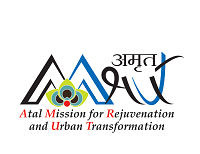
Why in news?
Under the Atal Mission for Rejuvenation and Urban Transformation (AMRUT) 2.0, cities are expected to launch projects worth Rs 5,000 crore. These projects will focus on water supply, sewage treatment, and the rejuvenation of water bodies and parks. This initiative is part of the current government's 100-day agenda during its third term.
About
- AMRUT was initiated in 2015 to offer basic civic facilities like water supply, sewerage, urban transport, and parks to enhance the quality of life, especially for the underprivileged.
Objective
- Ensure access to tap water and sewerage for every household.
- Enhance city amenities by developing green spaces like parks.
- Reduce pollution by promoting public transport and non-motorized transport.
Coverage
- The mission spans 500 cities, including all cities and towns with a population exceeding one lakh and notified Municipalities.
Achievements
- AMRUT has facilitated 1.1 crore household water tap connections and 85 lakh sewer connections, benefiting over 4 crore individuals.
Aim
- Provide water supply to all households in approximately 4,800 urban local bodies.
- Ensure sewerage and septage coverage in 500 AMRUT cities.
Principles and Mechanism
- AMRUT 2.0 will endorse circular economy principles and promote conservation of surface and groundwater.
- It will emphasize data-led governance in water management and technology advancement.
Funding
- AMRUT 2.0 has received Central assistance of Rs 66,750 crore until 2025-2026, with a total estimated outlay of Rs 2.99 lakh crore.
Current status
- As of July 25, the Ministry of Housing and Urban Affairs reported progress in awarding projects worth Rs 77,317.40 crore.
100 Day agenda
- Cities aim to commission sewage treatment plants and water treatment plants, benefiting numerous households.
GS2/Polity
Substantive Equality of Opportunity
Source: The Print
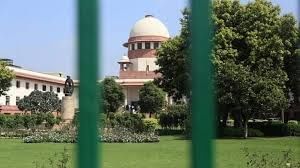
Why in News?
Giving states the power to sub-classify Scheduled Castes (SCs) and Scheduled Tribes (STs) for reservation in jobs and education, the Supreme Court said the move would provide “substantive equality of opportunity for the backward classes”. A 7-judge bench (in a 6:1 order) overruled a 2005 five-judge bench verdict in the E.V. Chinnaiah case that outlawed the Andhra Pradesh government’s notification to sub-categorise SC/STs in the state.
A History of the SC's Past Interpretations on Affirmative Actio
- Formalistic reading - Reservations as an exception to the principle of equal opportunity:
- In the State of Madras v. Champakam Dorairajan (1951), it was held that reservation of seats in educational institutions was unconstitutional.
- There was no express provision that allowed this, like Article 16(4) of the Constitution did for public employment.
- This led to Parliament enacting the first amendment to the Constitution in 1951, which inserted Article 15(4) (which is essentially an exception to Article 29) enables the State to make special provisions for the advancement of any socially and educationally backward classes of citizens or for the SCs and the STs.
- In Indra Sawhney v. Union of India (1992) (Mandal judgment), the court observed that Articles 15(4) and 16(4) are special provisions or an exception to the principle of equality.
Substantive reading of the equality code
- In M R Balaji v State of Mysore (1962), the court set a 50% ceiling for reservation for the first time.
- The limit of 50% reservation is disputed but has persisted, barring the 10% EWS quota.
- In State of Kerala v. N M Th
- omas (1975), the SC upheld a Kerala law in which the qualifying criteria for government jobs was relaxed for SC and ST candidates.
Limiting efficiency
- Article 335 of the Constitution, which provides for reservation for SCs and STs in services and posts, states that the reservation must be taken consistently with the maintenance of efficiency of administration.
- In the 1992 Indra Sawhney judgment, the SC held that reservations in promotions would dilute efficiency in administration.
- The Supreme Court had observed that SCs form a class by themselves and any further classification would violate the doctrine of reasonableness, amount to “discrimination in reverse”, and would run contrary to Article 14 (right to equality).
- Because the Indra Sawhney case (1992) clearly stated that it was ruling exclusively on the sub-classification of OBCs, the apex court decided that the principle of sub-classification of OBCs in that case will not apply to SCs.
- Since SC/STs are notified by the President, the top court had said that the objective of the notification was to afford special protection to SCs as a homogeneous group.
- In 2020, a reference made by a 3-judge bench to a larger bench held that it was not convinced by the Chinnaiah decision.
SC’s Verdict in the State of Punjab v. Davinder Singh Case (2024)
- Underlining substantive equality
- The Chief Justice of India (CJI) underlined the concept of substantive equality - the principle that the law must account for the different backgrounds and historical injustices faced by persons or groups.
- Declaring SC/STs to be a heterogeneous group, the majority verdict said its sub-categorisation is a constitutional requirement to secure substantive equality.
- The State can employ a range of means (including subclassification within the SCs) under the Constitution to secure substantive equality, provided it does not lead to the exclusion of one of the categories in the class.
- This is to expand the sphere and the scope of the reservation to ensure that the benefits trickle down to those who need it the most.
- Reframed the quota-versus-efficiency question: The CJI has argued that securing higher marks in an examination does not contribute to higher efficiency.
- The stereotype that reservation leads to inefficiency in fact makes promotions inaccessible to SC/ST candidates.
GS3/Science and Technology
New tech promises to kill weeds in rice and wheat fields
Source: Indian Express
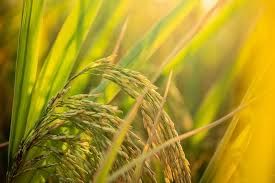
Why in news?
Agricultural scientists and policymakers have long sought methods to cultivate rice and wheat with reduced water usage and without burning leftover straw or extensive land preparation. In this context, the recent breakthroughs are a silver lining in rice and wheat production as these involve breeding rice and wheat varieties/hybrids that tolerate the herbicide Imazethapyr, which controls competing weeds.
Rice fields
- In the current kharif season, two basmati rice varieties (Pusa Basmati 1979 and Pusa Basmati 1985) and two non-basmati rice hybrids (Sava 134 and Sava 127) have been commercially planted.
- Developed by the Indian Agricultural Research Institute (IARI) and Savannah Seeds Pvt. Ltd.
- These contain a mutated acetolactate synthase (ALS) gene that enables farmers to spray Imazethapyr for controlling weeds in rice.
- Common weeds affecting rice cultivation are: Echinochloa colona (commonly called jangli chawal), Cyperus rotundus (motha), and Trianthema portulacastrum (patthar-chatta).
Wheat Fields
- In the upcoming rabi season, Mahyco Pvt. Ltd plans to launch Imazethapyr-tolerant wheat varieties, Goal and Mukut.
- Imazethapyr is used for controlling Phalaris minor (gulli danda), Chenopodium album (bathua) and other such major weeds.
- Mahyco and Savannah Seeds have partnered to promote their 'FullPage' direct seeded rice (DSR) and 'FreeHit' zero-tillage (ZT) wheat technologies, aiming to make farming more climate-smart and sustainable.
For rice
- Farmers create nurseries to grow young plants, which are transplanted after 30 days into puddled fields.
- These fields are kept flooded for the first 2-3 weeks to prevent weed growth and then irrigated weekly for the remainder of the 155-160 day growing season.
- This method requires up to 30 irrigations per acre, each using over 200,000 liters of water, plus significant labor costs for transplanting.
For Wheat
- Farmers burn the leftover paddy straw and plough the field multiple times to manage weeds.
- This involves initial ploughing with a harrow or cultivator, followed by irrigation, and additional ploughing with either a rotavator or harrow/cultivator before sowing wheat seeds.
Solutions
- Direct Seeded Rice (DSR) and Zero-Tillage (ZT) wheat technologies replace traditional water-intensive and ploughing methods with the herbicide Imazethapyr for weed control.
- DSR eliminates the need for paddy nurseries, puddling, transplanting, and flooding, allowing paddy seeds to be sown directly like wheat.
- The land only requires laser leveling before sowing, costing about Rs 1,200/acre. This method saves around 30% of water and reduces labor and fuel costs.
- The 'FreeHit' ZT technology for wheat, developed by Mahyco, allows direct sowing without burning paddy stubble or land preparation.
GS1/ Geography
Thadou People
Source: NDTV
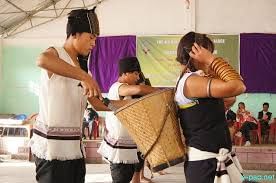
Why in News?
A section of the Thadou tribes represented by the Manipur-based Thadou Students' Association (TSA) has formed a global platform to look into critical issues facing the community, particularly in Manipur.
About Thadou people:
- The Thadou people are native inhabitants living near the Imphal Valley in Manipur, India.
- They rank second in population size in Manipur, right after the Meitei group, as per the Manipur Census 2011.
- Besides Manipur, Thadou communities are also present in Assam, Nagaland, and Mizoram in India, as well as in Chin State and Sagaing Division in Burma/Myanmar.
- The Thadou language is part of the Tibeto-Burman group within the larger Sino-Tibetan language family.
- Thadou people engage in various activities like animal husbandry, farming, hunting, and fishing for their livelihood.
- They primarily practice Jhum agriculture, a form of slash-and-burn cultivation.
- Thadou settlements are typically situated in forested areas, with a preference for locations on or just below ridges.
- Unlike planned urban areas, Thadou villages lack a specific layout or marked boundaries.
- Most Thadou individuals identify as Christians, following the Christian faith.
GS3/Science and Technology
Astra Missile
Source: India Today
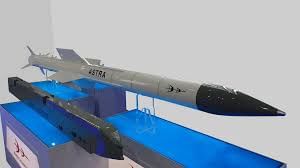
Why in News?
The Indian Air Force (IAF) has given clearance to the Defence Research and Development Organisation (DRDO) and the Bharat Dynamics Limited (BDL) to produce 200 Astra air-to-air missiles for its Su-3O and LCA Tejas fighter aircraft.
About Astra Missile:
- Astra is a missile for fighter jets that can hit faraway targets without seeing them directly.
- It's made in India by DRDO and BDL for the Indian Air Force.
- The missile is made to take down fast and tricky flying targets.
- It's really good at fighting against many tough targets at once.
- It's one of the top air-to-air missiles globally.
- Astra is made in different types to suit different needs.
Features of ASTRA Mk-I:
- Astra is 3.6 meters long, 178 mm wide, and weighs 154 kg.
- It can hit targets 80 to 110 km away head-on and flies almost as fast as hypersonic at 5 times the speed of sound.
- Guided by a smart system, it can choose when to lock on to a target before or after launch.
- After firing, the jet can get away quickly to stay safe.
- It uses a special engine technology and works well in all weather, day or night.
- It's very reliable and has a high chance of hitting the target with one shot.
GS3/Environment and Ecology
Pobitora Wildlife Sanctuary
Source: The Hindu
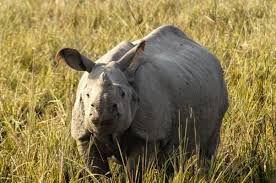
Why in News?
A mahout from Darrang district met a grisly end at the Pobitora Wildlife Sanctuary after a wild elephant trampled him to death.
About Pobitora Wildlife Sanctuary:
- Location: Located on the southern bank of the Brahmaputra River in Morigaon district, near Guwahati in Assam.
- Status: Designated as a reserve forest in 1971 and later as a wildlife sanctuary in 1987.
- Species: Home to the largest population of Indian One-Horned Rhinoceros, with about 102 rhinos in a 38.8 sq. km area.
- Landscape: Dominated by alluvial lowlands and marshes.
- Boundaries: The sanctuary is naturally bordered by the Brahmaputra River to the north and the Garanga Beel to the south.
- Vegetation: Majority of Pobitora comprises wet savannah featuring various plant species.
- Challenges: Water hyacinth poses a significant challenge, especially for waterfowl, forming thick mats on the water surface.
- Wildlife: Apart from rhinos, the sanctuary is also home to leopards, wild boar, Barking deer, wild buffalo, and more.
- Birds: Boasts over 375 species of resident and migratory birds, including the Indian pied Hornbill, Osprey, Hill Myna, and Kalij Pheasant.
GS3/Science and Technology
Glioblastoma
Source: News Medial
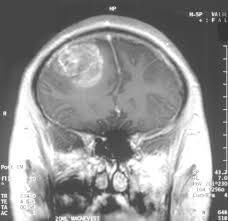
Why in News?
In an innovative new study of glioblastoma, scientists used Artificial Intelligence (AI) to reprogram cancer cells, converting them into dendritic cells (DCs), which can identify cancer cells and direct other immune cells to kill them.
About Glioblastoma:
- It's a type of cancer that begins as cell growth in the brain or spinal cord.
- Glioblastoma, like all cancers, stems from DNA changes causing uncontrolled cell growth. The reasons behind these genetic alterations are mostly unknown.
- Glioblastoma originates from astrocytes, which nourish nerve cells.
- These tumors create their own blood supply, aiding their growth and ability to infiltrate healthy brain tissue easily.
- It grows rapidly, damaging healthy tissue it encounters, and can occur at any age, although it's more common in older adults.
- It comprises nearly half of all adult brain cancer cases.
- Symptoms:
- Signs of glioblastoma may include worsening headaches, nausea, blurred vision, speech difficulties, altered touch sensation, and seizures.
- Additional symptoms could involve balance problems, coordination issues, and facial or body movement impairments.
- Treatment:
- Glioblastoma doesn't have a cure. Treatments focus on slowing cancer growth and alleviating symptoms.
- Main treatments include surgery, radiotherapy, and chemotherapy.
GS1/Geography
Key Facts about Brahmani River
Source: Indian Express
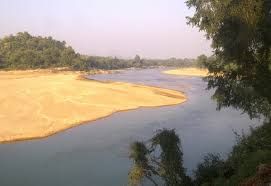
Why in News?
Residents of low-lying areas in Rourkela city are living in fear as the Brahmani River is in spate as owing to incessant rains for the last few days.
About Brahmani River:
- It is a significant river flowing eastward through multiple states in India.
- The river is called Dhamra in its lower stretches.
Origin:
- It is created by the merging of the Sankh and South Koel rivers close to the industrial town of Rourkela in Odisha.
- Both sources of the Brahmani River are located on the Chota Nagpur Plateau.
- The Sankh River starts near the Jharkhand-Chhattisgarh border, while the South Koel River originates in Jharkhand.
Course:
- The river flows through Jharkhand, Chhattisgarh, and Odisha, covering a total area of 39,033 sq. km before meeting the Bay of Bengal.
- It flows south-southeast past Bonaigarh and Talcher in Odisha before turning east to merge with the northern branches of the Mahanadi River.
- The resulting Brahmani delta is home to the Bhitarkanika Wildlife Sanctuary, known for its estuarine crocodiles.
Length:
- The total length of the river is approximately 799 km, with 541 km situated in Odisha.
Geography:
- The Brahmani River basin is bordered by the Chhotanagpur Plateau in the north, the Mahanadi basin in the west and south, and the Bay of Bengal in the east.
- It is one of the rare rivers that traverse the Eastern Ghats and has carved a minor gorge at Rengali in Odisha, where a dam stands.
Tributaries:
- The main tributaries of the river include Sankh, Tikra, and Karo.
GS3/Science and Technology
Lyme disease
Source: BBC

Why in News?
Lyme disease is a significant public health concern, affecting approximately 476,000 individuals in the US each year.
About Lyme disease:
- It is a sickness caused by the germ Borrelia burgdorferi, spread by ticks.
- Transmission: Humans get it from tick bites, not from people, pets, air, food, water, lice, mosquitoes, fleas, or flies.
- It's common in forests and grassy spots worldwide, especially in warm seasons, mostly seen in North America, Europe, and parts of Asia.
Symptoms:
- Signs show up 3 to 30 days after a tick bite.
- Typical symptoms are fever, headache, tiredness, and a round red rash called erythema migrans.
- Erythema migrans is a key sign for early diagnosis and management.
- If not treated, it can lead to serious problems in the joints, heart, and nerves.
Treatment:
- The usual cure uses antibiotics like doxycycline or amoxicillin, especially in the beginning.
|
49 videos|5376 docs|1137 tests
|
















